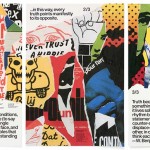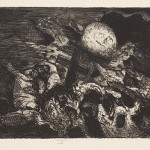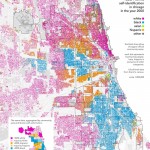Founded by Lina Bo and her husband Pietro Maria Bardi in 1950, the Brazilian magazine Habitat (“The magazine of the arts in Brazil”) manifested a vision for a modern culture in which all disciplines – from art to design, from dance to fashion, from photography to crafts – could convene to shape a new human environment centred on a sense of “dignity, morality of life and, therefore, spirituality and culture”.
Habitat‘s disruptively new aesthetic model was based on the association of features on modern architecture and arts with thoughts on Brazilian culture and its pre-modern, folkloric products. One example of such an ethnographic take is the following series of etchings depicting stylized faces on stones, created by indigenous populations from Brazil, (referred to as “Indian” in the original article. )

The Indian designer
When the Indian draws, he does it by sensations, by syntheses, by idealizations. He never learned to say the truth in the sense of accuracy, copy, repetition: his truth is symbolic, it follows and condensates fixed symbols, but which vary in composition to offer a mixture of legend and the state of the soul. Here are a series of geometric portraits, enriched with infinite and mysterious lines, capable of guiding our thinking in the deepest meditations. This game of forms is not random; instead, it obeys an expressive system, resulting from someone who understands its time and tradition. hit’ psychological capability is absolute, free from all external and superfluous crust. The most refined contemporary painter could not go any further.
(Original article text featured in Habitat magazine). From Des-Habitat, A project by Paulo Tavares, realised by agency autonoma, in the context of the show bauhaus imaginista: Learning from, 2018/2019.






Further reading:
Habitats, Humboldt Books, 2018. “A compilation of texts from Lina Bo Bardi’s tenure as director of Habitat.”
Cecilia Braschi, “Lina Bo Bardi et la revue Habitat“, on Aware Women Artists.





Leave a Reply